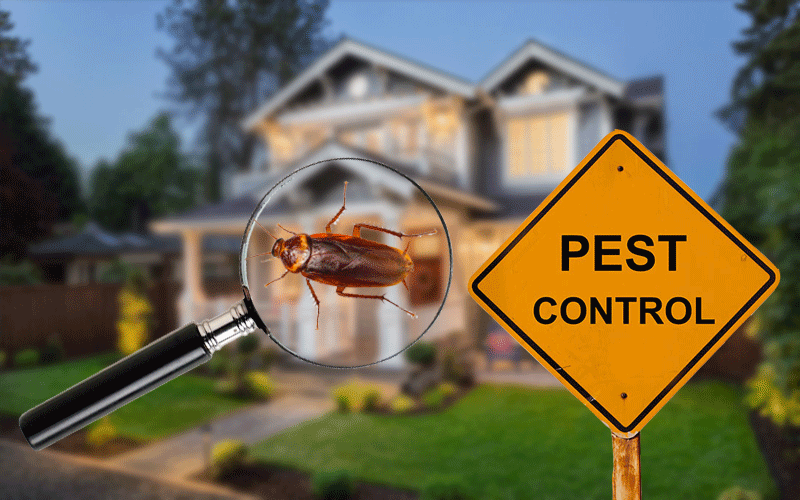A1 Charlotte Pest Control Companies - Your Local Pest Specialists
Bed Bug Therapy Breakdown: Comparing Chemical Vs. Non-Chemical Solutions
In the realm of insect control, especially when managing the consistent concern of bed pests, the option in between chemical and non-chemical therapy options can be an essential one. Both methods supply unique benefits and drawbacks, affecting factors such as effectiveness, safety considerations, and general price. By checking out the nuanced details of each technique, a more clear understanding of which course to pursue in dealing with a bed bug infestation can be attained.
Effectiveness of Chemical Therapies
Chemical treatments for bed pest problems have been commonly identified for their powerful and rapid effectiveness in removing these bugs. When taking into consideration the effectiveness of chemical treatments, it is crucial to understand that they can provide a comprehensive and fast solution to a bed insect trouble. Expert pest control men typically count on insecticides to target bed insects at various stages of their life cycle, consisting of nymphs, eggs, and adults. These chemicals usually function by interfering with the bed bugs' anxious system, bring about paralysis and eventual death.
Additionally, chemical treatments have the benefit of using recurring results, suggesting that they can remain to eliminate bed insects even after the first application. This recurring activity is especially valuable in combating any potential re-infestations. Additionally, the rapid activity of chemical treatments can bring relief to individuals facing severe bed bug infestations, allowing them to restore control of their space promptly.
Safety Interest In Chemical Solutions
One critical facet that requires mindful factor to consider when utilizing chemical services for bed insect treatment is ensuring the safety and security of residents and the environment. While chemical treatments can be efficient in removing bed pests, they may position threats if not managed appropriately. One of the main security worry about chemical remedies is the possible harm they can create to human health. Exposure to certain chemicals used in bed bug treatments can result in respiratory issues, skin inflammation, or other damaging responses, especially in individuals with pre-existing conditions or level of sensitivities. Additionally, inappropriate application or dosage of chemical pesticides can result in hazardous residues sticking around in the treated area, posturing long-term wellness risks to owners.
In addition, the environmental influence of chemical services is an additional considerable consideration. Some pesticides utilized in bed insect treatments might be hazardous to beneficial pests, wildlife, and ecosystems if they seep right into the dirt or water systems. It is important to utilize chemical therapies judiciously, adhering to safety standards, and considering much less poisonous alternatives to minimize these dangers and guarantee the risk-free and efficient monitoring of bed bug infestations.
Benefits of Non-Chemical Methods
Thinking about the possible safety worries and ecological influence linked with chemical services for bed insect treatment, checking out non-chemical approaches provides an appealing option with numerous distinct benefits. Non-chemical treatments are eco pleasant, as they do not add to air or water air pollution, making them a lasting selection for bug control.
Additionally, non-chemical options can be efficient in targeting bed bugs, including hard-to-reach areas where visit this web-site chemical treatments might not penetrate - A1 pest control charlotte nc bed bugs. Techniques such as warmth treatment, vacuuming, heavy steam cleansing, and bed mattress coverings provide extensive eradication without the use of unsafe chemicals.
Limitations of Non-Chemical Treatments

Additionally, non-chemical treatments typically need several applications to accomplish successful eradication. This can be taxing and might not constantly guarantee full elimination of all bed pests and their eggs, specifically in hidden or hard-to-reach places.
Additionally, the success of non-chemical therapies heavily relies see this here on proper execution and thoroughness, which can be challenging for people without professional knowledge. Insufficient application of non-chemical approaches may cause insufficient eradication, causing consistent infestations and the need for extra therapies.
For that reason, while non-chemical treatments have their advantages, it is important to acknowledge these limitations and consider them when determining the most reliable strategy for taking care of bed pest invasions.
Expense Contrast: Chemical Vs. Non-Chemical Options
Provided the restrictions associated with non-chemical treatments, an essential element to assess in the look at more info context of bed pest monitoring is the cost contrast between chemical and non-chemical choices. In comparison, non-chemical therapies like heat therapy or steam can be a lot more costly, with prices varying from $1,000 to $6,000 for an entire home. While the first price of chemical treatments might appear lower, multiple therapies may be called for to fully get rid of the problem, potentially enhancing the general expense.
Verdict

Taking into consideration the prospective safety problems and ecological effect associated with chemical services for bed bug therapy, checking out non-chemical techniques offers an encouraging choice with a number of distinct benefits.Offered the constraints linked with non-chemical therapies, an important element to examine in the context of bed insect management is the expense comparison between chemical and non-chemical choices. In contrast, non-chemical treatments like heat treatment or steam can be more costly, with costs varying from $1,000 to $6,000 for an entire home. While the initial expense of chemical therapies may appear lower, multiple treatments may be called for to fully eliminate the infestation, potentially enhancing the total price.In final thought, when comparing chemical and non-chemical bed bug therapy options, it is crucial to think about efficiency, security, advantages, restrictions, and expense.